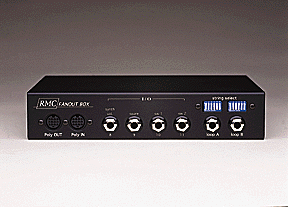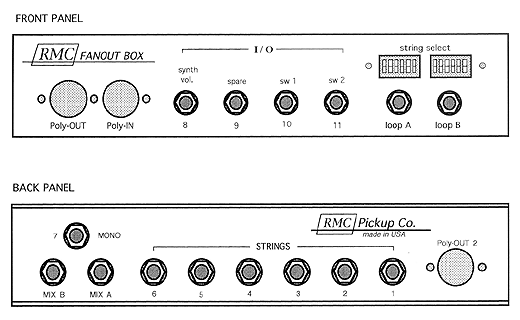
Introducing . . . the FANOUT BOX

Front view of RMC Fanout Box featuring from left to right :
Poly-OUT 1 jack, Poly-IN jack, synth volume I/O, spare line I/O, SW 1 I/O, SW 2 I/O,
Custom String Mix switch banks A & B and Loops A & B
The back panel (not shown) features : Poly-OUT 2 jack, Separate string signal I/O's 1 thru
6,
Custom Mix A & B Outputs and a MONO Out connection.
